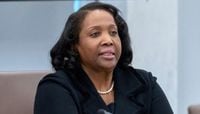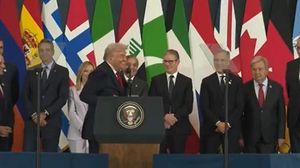On the evening of August 25, 2025, President Donald Trump set off a political and economic firestorm by announcing the immediate firing of Federal Reserve Board Governor Lisa Cook, citing allegations of mortgage fraud. The move, which Trump broadcast via social media, marks the first time in the Federal Reserve's 112-year history that a sitting president has attempted to remove a governor from the central bank. The implications are profound, touching on the independence of the Fed, the stability of U.S. monetary policy, and the broader political climate as Trump seeks to assert greater influence over the nation’s most powerful economic institution.
Trump’s letter accused Cook of making false statements on mortgage applications, referencing a criminal referral from William Pulte, Director of the Federal Housing Finance Agency and a Trump appointee. In his message, Trump declared, “The American people must be able to have full confidence in the honesty of the members entrusted with setting policy and overseeing the Federal Reserve. In light of your deceitful and potentially criminal conduct in a financial matter, they cannot and I do not have such confidence in your integrity.”
Lisa Cook, who became the first African-American woman to serve as a Federal Reserve governor after her nomination by President Joe Biden in 2022, wasted no time in responding. In a statement to ABC News, she asserted, “President Trump purported to fire me ‘for cause’ when no cause exists under the law, and he has no authority to do so. I will not resign. I will continue to carry out my duties to help the American economy as I have been doing since 2022.” Her attorney, Abbe David Lowell, announced on August 26 that Cook would challenge the firing in court, a move that the Fed acknowledged, stating it would abide by any judicial decision regarding her status.
The legal battle centers on a murky section of the Federal Reserve Act, which allows a president to remove a governor “for cause,” but fails to define what qualifies as such. Daniel Farber, a law professor at the University of California, Berkeley, explained to Politifact, “‘For cause’ generally means inefficiency, neglect of duty, or malfeasance in office. Arguably, none of those apply since the conduct took place before Cook was in office. But legal precedent is scanty.” Legal experts widely expect the dispute to reach the Supreme Court, which has recently shown deference to presidential authority to remove federal officials, though it has also acknowledged the unique, quasi-private structure of the Federal Reserve.
Cook’s ouster, if successful, would give Trump a chance to appoint a majority of the seven-member Board of Governors, thereby consolidating his influence over the Federal Open Market Committee (FOMC)—the body responsible for setting U.S. interest rates. Trump has already nominated Stephen Miran to fill a recent vacancy left by the resignation of Adriana Kugler, and two other Trump appointees, Michelle Bowman and Christopher Waller, currently serve on the board. The FOMC, which includes the seven governors and five regional Federal Reserve Bank presidents, meets at least eight times a year to determine the target federal funds rate, a benchmark that influences everything from home mortgages to credit card debt.
This is not Trump’s first clash with the Fed. Throughout both his terms, he has publicly pressured the central bank—and Chair Jerome Powell—to lower interest rates, arguing that easier monetary policy would spur economic growth and bolster his administration’s economic record. According to ABC News, the attempted firing of Cook is the latest escalation in a months-long campaign to steer the Fed toward more accommodative policies. Trump even floated the idea of firing Powell earlier this summer, blaming the Fed chair for keeping rates unchanged despite a weakening labor market.
The timing of Trump’s move comes as the U.S. economy faces a precarious moment. Hiring has slowed sharply, while inflation, fueled in part by new tariffs, has ticked upward. On August 19, Fed Chair Powell acknowledged the “challenging situation” facing the central bank and hinted at a possible interest rate cut, noting the need to balance concerns about unemployment with the risk of rising prices. Market expectations, as measured by CME FedWatch, suggest an 89% chance of a rate cut at the Fed’s September meeting—though analysts attribute this more to recent weak jobs data than to political pressure from the White House.
Still, the specter of presidential interference has raised alarms among economists and legal scholars. Jeremy Kress, a professor at the University of Michigan and former Fed attorney, warned ABC News, “The U.S. economy has been generally prosperous and stable for the past century in part due to an understanding of central bank independence that prevents presidents from meddling with the Fed for their own political purposes. That’s what’s at stake here.” Alan Blinder, a former Fed vice chairman, echoed these concerns, telling ABC News that history offers a cautionary tale: President Richard Nixon’s pressure on the Fed in the early 1970s to lower rates contributed to runaway inflation, which ultimately forced the central bank to hike rates to 20% in 1981, plunging the country into recession.
The markets’ initial reaction to the Cook firing was mixed. While stocks rose on August 26, the U.S. dollar index fell and gold prices climbed, reflecting investor unease about the potential for long-term inflation and political meddling in monetary policy, as reported by CNN and CNBC. Everyday Americans are unlikely to feel immediate effects from the dispute, but the ramifications could be significant if the Fed’s independence is compromised and future interest rate decisions become subject to political whims.
Beyond the legal and economic stakes, there is a symbolic dimension to the controversy. Cook, a distinguished economist with a PhD from the University of California, Berkeley, has held positions at Michigan State University, Harvard, and Stanford, and served as a senior economist on the Council of Economic Advisers under President Barack Obama. Her appointment in 2022 was historic, and her removal—if it stands—would not only reshape the Fed’s leadership but also send a message about the resilience of political norms and the boundaries of presidential power.
As the legal battle unfolds, all eyes are on the courts and the central bank. The outcome will help determine not just the fate of one governor, but the future of the Federal Reserve’s independence—and, by extension, the stability of the American economy.




